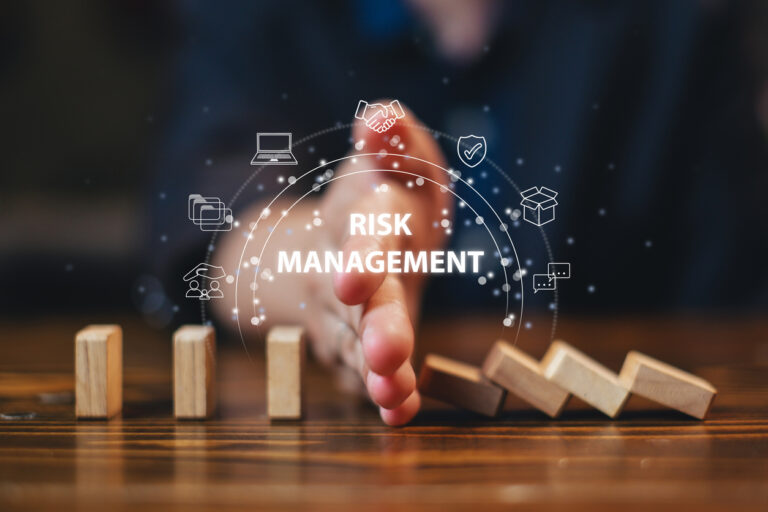Rapid changes in just about every aspect of the business landscape, means mature and sophisticated organisations face significant challenges in managing risks. With global operations, diverse teams, and complex regulatory environments, the stakes have become higher than ever. Failing to effectively manage these risks can lead to severe financial losses, reputational damage, and operational disruptions. But how can you ensure your organisation is resilient and prepared for any eventuality?
The Hidden Risks in Your Organisation
Did you know? According to a recent study by Deloitte, 70% of large organisations experience at least one major risk event annually, and 60% of those events have a significant financial impact. This staggering statistic underscores the urgency of addressing the hidden risks lurking within your organisation.
Here are some of the most pressing challenges that more sophisticated organisations face today:
1. Human Capital and Engagement
Challenge: Keeping employees engaged and accountable in risk management can be difficult in large, established organisations. Risk management is often seen as the responsibility of specific departments, leading to limitations and gaps in coverage.
Impact: When employees are not actively engaged in identifying and mitigating risks, small issues can escalate into major crises. This lack of engagement can result in costly disruptions and damage to your organisation’s reputation.
Example of Failure: At a major financial services firm, an insider threat incident occurred due to a lack of engagement and oversight. An employee was able to exfiltrate sensitive data, leading to significant financial loss and reputational damage (McKinsey & Company).
Solution: Transform your workforce into proactive “risk sensors.” Foster a culture of accountability and engagement through comprehensive training programs, clear communication of roles and responsibilities, and recognition of employee contributions and without fear of persecution. By embedding a positive risk management mindset into your organisational culture, you can ensure that every employee is vigilant and proactive.
2. Complex Risk Landscape
Challenge: Larger and more mature organisations often operate in multiple regions and industries, each with its unique risk landscape. Managing these risks with a one-size-fits-all approach is ineffective and can lead to oversights.
Impact: Without a tailored risk management strategy, organisations are vulnerable to localised threats that can disrupt operations and erode stakeholder confidence.
Example of Failure: The COVID-19 pandemic severely disrupted Toyota’s supply chain, which was long admired for its efficiency. The global chip shortage and lockdowns in key regions like Southeast Asia exposed vulnerabilities, leading to significant production delays and financial losses. This highlighted the risks of a highly concentrated and lean supply chain model (Harvard Business Review).
Solution: Utilise a sophisticated risk lens that categorises risks not only by their nature and origin but also explores interdependencies. Leverage advanced analytics and AI to monitor and predict risks dynamically. This approach allows for proactive, tailored measures specific to different regions and sectors. By incorporating these advanced technologies, you can ensure your risk management strategy is both comprehensive and adaptive, enabling your organisation to respond swiftly and effectively to emerging threats. This nuanced strategy helps in identifying potential vulnerabilities, optimising resource allocation, and maintaining operational continuity despite disruptions.
3. Trust and Communication
Challenge: Building and maintaining trust within large organisations is challenging. A lack of trust can lead to underreporting of risks and poor communication, creating blind spots in your risk management strategy.
Impact: When employees do not trust the system, the business, or each other, critical risks may go unreported, leading to avoidable crises that could have been mitigated with better communication.
Example of Failure: Boeing’s 737 MAX crisis was exacerbated by poor communication and lack of transparency. Internal reports and employee concerns were not adequately addressed, leading to two fatal crashes and significant reputational damage. The investigation revealed that Boeing withheld crucial information from regulators and pilots about the MCAS system, which was a critical factor in the crashes. This lack of transparency and failure to address safety concerns adequately highlighted severe shortcomings in Boeing’s crisis management and communication strategies (CMI) (PRSA).
Solution: Foster a culture of transparency and trust by establishing open communication channels. Develop comprehensive crisis communication plans that include clear protocols for information sharing during emergencies. Implement feedback loops where employees can safely share concerns and suggestions without fear of repercussions. Regularly engage with stakeholders to build trust and ensure alignment on risk management objectives. This approach not only improves internal communication but also strengthens organisational resilience by ensuring that critical information flows freely and issues are addressed promptly. Regular updates and transparent reporting can also enhance stakeholder confidence and support proactive risk management.
4. Regulatory and External Environment
Challenge: Keeping up with regulatory requirements and external environmental changes is a significant challenge for organisations. Non-compliance can lead to severe penalties and reputational damage.
Impact: Regulatory non-compliance can result in hefty fines, legal battles, and loss of trust among stakeholders, severely impacting your organisation’s bottom line and market position.
Example of Failure: Westpac Banking Corporation faced significant penalties for widespread compliance failures, totalling A$113 million. The Australian Securities and Investments Commission (ASIC) took action against Westpac for various breaches, including charging fees to deceased customers. This penalty followed a record A$1.3 billion fine imposed by AUSTRAC in 2020 for anti-money laundering compliance failures, highlighting systemic issues within the bank’s compliance framework (TR – Legal Insight Australia).
Solution: Develop a robust system for continuous monitoring of regulatory changes and external factors, leveraging advanced compliance management systems with AI and machine learning to automate tracking and reporting. Engage with industry bodies and actively participate in policy discussions to stay ahead of changes. Ensure these measures align with the organisation’s identity, values, and purpose by integrating regulatory awareness into the organisational culture. Encourage employees at all levels to stay informed and proactive about compliance issues through regular training and updates, fostering a culture of compliance that is embedded within the fabric of your organisation. This holistic approach ensures agility, compliance, and preparedness for evolving regulatory landscapes.
5. Collaboration Across Functions
Challenge: Siloed departments and lack of cross-functional collaboration can hinder effective risk management. Different parts of the organisation may not share critical information, leading to gaps in the overall risk strategy.
Impact: Without collaboration, critical information may be lost, leading to inadequate risk responses, and missed opportunities for mitigation.
Example of Failure: The 2017 Equifax data breach was partly attributed to a failure in communication and collaboration between IT and security teams, leading to one of the largest data breaches in history and severe reputational damage. (Action1 Patch Management) (House Oversight) (Tech Monitor).
Solution: Foster a collaborative culture by encouraging cross-functional teams to work together on risk management initiatives. Leverage the wealth of data within the organisation to enhance both protection and operational success. Implement digital platforms to facilitate real-time information sharing and collaborative problem-solving. Strengthen your risk management capabilities by developing partnerships with external organisations. Ensure these collaborative efforts align with the organisation’s values and strategic goals, creating a unified approach to risk management that leverages diverse perspectives and expertise for more robust and adaptive solutions.
6. Resource Allocation and Tool Effectiveness
Challenge: Effectively allocating resources and ensuring that the tools and systems supporting the business and its employees are up-to-date and efficient can be particularly challenging in large organisations. This involves maintaining a balance between investing in cutting-edge technologies and optimising existing processes, while ensuring that all departments have the necessary resources to mitigate risks effectively. Additionally, aligning these investments with the organisation’s strategic goals and ensuring seamless integration across various functions is crucial for sustained success.
Impact: Ineffective tools and poor resource allocation can lead to missed risks, bottlenecks, and slow responses, jeopardising your organisation’s stability and growth. These inefficiencies can create challenges for employees, resulting in dissatisfaction, frustration, and disengagement. Consequently, this can diminish overall productivity and morale, further exacerbating operational risks and hindering the organisation’s ability to achieve its strategic objectives.
Example of failure: Optus faced a major data breach in 2023 that compromised the personal information of millions of customers. The breach exposed deficiencies in their data security protocols and resource allocation, emphasising the critical need for continuous investment in up-to-date security tools and systems to protect customer data (OAIC).
Solution: Developing robust systems and providing tools, including advanced technologies, that support employees in performing their roles is crucial. Setting employees up for success directly contributes to achieving optimal business outcomes. Invest in sophisticated management methods and tools that offer deeper insights into operational trends and patterns, including risk management. Consider incorporating capabilities to monitor human behavioural trends, such as disengagement, to proactively address potential issues. Regularly review and update the tools and resources available to employees, ensuring they have the necessary skills and knowledge to use them effectively. This holistic approach not only enhances operational efficiency but also fosters a supportive and engaged work environment.
The Importance of 'How' in Risk Management
When it comes to both operating a business and managing risks, it’s not just about ‘what’ you do or ‘why’ you do it, but more importantly, ‘how’ you do it. Ticking boxes is one thing, but truly working ‘with’ and ‘through’ your people to get a better outcome requires a shift in mindset and conscious steps to be aware of your approach. By focusing on ‘how’ you approach risk management, you can create a more resilient and adaptable organisation.
Key Strategies to Elevate Risk Management:
- Activate Your People: Transform your employees into proactive risk managers (“risk sensors”) who are vigilant and engaged.
- Adopt a Risk Lens: Use a comprehensive risk lens to understand and categorise risks based on their nature and origin.
- Understand the Origin of Risk: Dive deep into the underlying causes of risk to develop targeted mitigation strategies.
- Build Trust: Foster genuine respect and trust within your organisation to ensure open communication and effective risk reporting.
- Optimise the Environment: Maximise your work environment and interdependencies to support robust risk management.
- Foster Collaboration: Encourage cross-functional teamwork and a collaborative mindset to address risks holistically.
- Equip with the Right Tools: Provide your team with advanced tools, expertise, skills, systems, and processes to manage risks effectively.
Why Our Expertise Matters to You
With over two decades of experience in risk management, I have pioneered a people-centric approach that transforms both mindset and practices. As the best-selling author of “Risk Starts and Ends with People,” I introduced the ‘PROTECT’ method, offering a fresh perspective on risk management that is accessible even to non-technical personnel. In my role as a guest lecturer at a prestigious university, I prepare future leaders to navigate complex risk landscapes. Recognised by “The Australian Business Journal” in 2022 as one of the ’20 Australian Women Making Moves,’ my proven track record and industry insights ensure tailored programs that elevate the protection your organisation and enhance its resilience.
The Choice is Yours
The potential risks of inaction are too significant to ignore. Don’t wait for the next crisis to test your resilience or make unwanted headlines. Schedule a strategy session today to discover how you can elevate your risk management practices and truly ‘PROTECT The House’—your organisation.
Learn more about PROTECT by reaching out to discuss your requirements.




